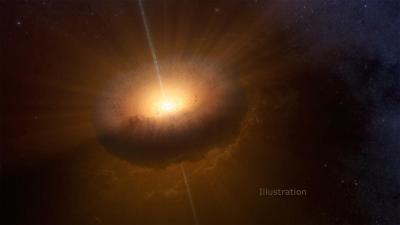
The lone star's behavior has similarities to FU Orionis, a young outbursting star that had an initial three-month outburst in 1936-7. But CX330 is more compact, hotter and likely more massive than the FU Orionis-like objects known. The more isolated star launches faster "jets," or outflows of material that slam into the gas and dust around it.
"The disk has probably heated to the point where the gas in the disk has become ionized, leading to a rapid increase in how fast the material falls onto the star," said Thomas Maccarone, study co-author and associate professor at Texas Tech.
Most puzzling to astronomers, FU Orionis and the rare objects like it -- there are only about 10 of them -- are located in star-forming regions. Young stars usually form and feed from their surrounding gas and dust-rich regions in star-forming clouds. By contrast, the region of star formation closest to CX330 is over a thousand light-years away.
Read the full story at NASA/JPL News

